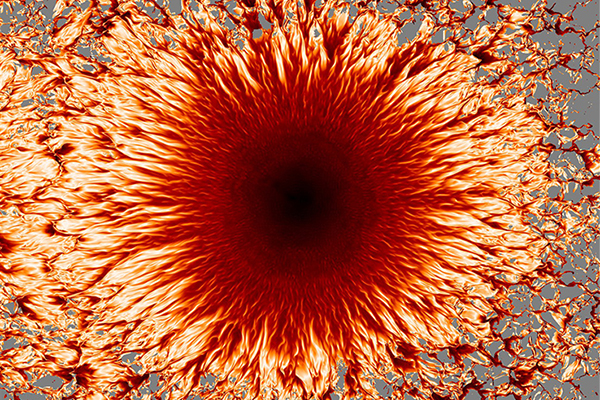
Full Text:
Scientists at the National Center for Atmospheric Research’s High Altitude Observatory used a supercomputer to create this 3-D, high-resolution image of a sunspot’s dark central region, called the umbra, and its outer region, called the penumbra. The ability to accurately model the complex structure and dynamics of sunspots helps researchers better understand when they will emerge and how they will evolve.
Being able to anticipate sunspot activity using advanced computer models of the sunspot cycle may help scientists one day forecast future solar storms 24 hours or possibly 22 years--one solar cycle--in advance of a storm.Image credit: Matthias Rempel/National Center for Atmospheric Research